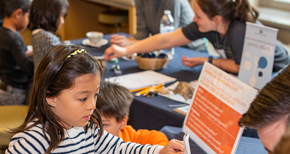Archaeology is fun, interesting, and intellectually engaging. It involves the investigation of objects and other evidence such as architecture, tools, foodways, and social patterns that allow us to understand how people in the past lived. Archaeologists use scientific analysis through laboratory and fieldwork, collections, libraries, and archival research. They also use their creative imagination and interpretation for reconstructing past lifeways. Archaeology can be a great learning tool for both classrooms and public events.
Teaching archaeology offers students an opportunity to use and develop critical-thinking skills like observations, interpretations, deductions, inferences, and classifications. It also incorporates the principles and practices of several other disciplines like mathematics (e.g. working with grids), earth science (e.g. studying stratigraphy), language arts (e.g. taking notes, writing reports), and art (e.g. drawing objects, making maps). Student exploration in archaeology may involve observing or assisting in a historic or prehistoric excavation, laboratory analysis, archival research, data analysis, and report writing.
Public outreach in archaeology has become much more than just introducing the public to the products of archaeological research. Most, if not all, archaeological projects should have some type of public component whether it be funding, participation, interpretation, or impact. As a result, related subfields of archaeology developed with specific theories, methods, and research objectives. These pages present the evolving state of public archaeology by examining current issues and trends in public archaeology and its potential future developments. This is a discussion that is active and ongoing.


